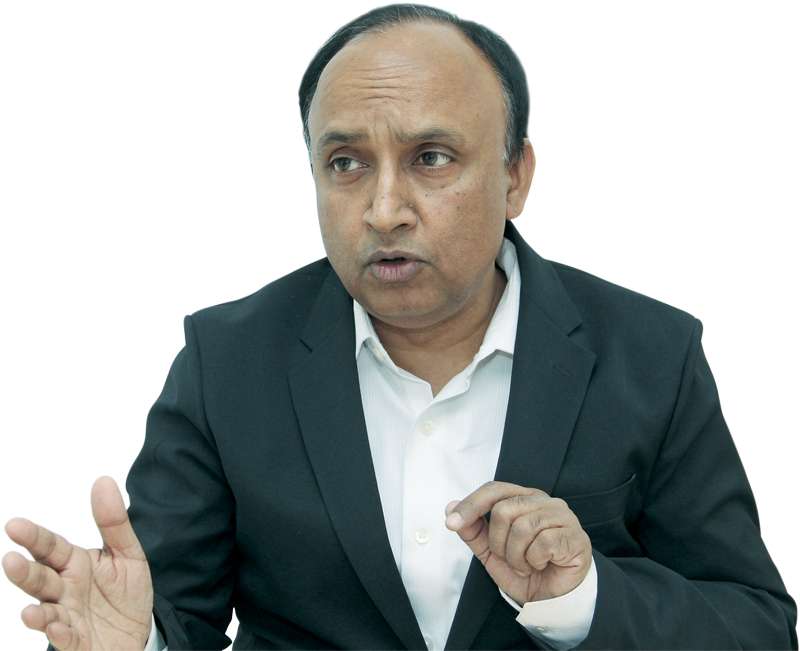Recently, CG Motocorp, the automotive division of CG Holdings and the authorised distributor of Maruti Suzuki four-wheelers in Nepal, launched the new generation Maruti Suzuki Wagon R in Nepal. In order to create a brand experience beyond the product, design and operation of Maruti Suzuki, the company also inaugurated its brand new Suzuki state-of-the-art showroom in Dhobighat, Lalitpur. Shashank Srivastava, executive director of Maruti Suzuki India Ltd, visited Nepal for the launching and inauguration ceremony. New Business Age caught up with Srivastava to talk about the company’s market presence and performance in the Nepal. Excerpts:
How do you observe the growth of the automobile market in Nepal?
Nepal is a developing economy. We have observed that the number of cars sold in the country has been increasing. Last year, Nepal’s car market grew by about 22 percent in to 23,500 units of passenger cars while the number of cars sold in the previous year was only 16,000 units.We do feel that there will be good growth in the automobile industry in Nepal in the future.
How is Maruti Suzuki playing its role in the development of the passenger vehicle market in Nepal? What’s your market share?
We are in the Nepali market for more than past 30 years.When we started selling our cars in Nepal, the car market was small. But today, around 24,000 units of cars are being sold a year. Our market share is roughly one third of it. We hold around 34 percent market share in the country. We hope that we will continue to be the market leader and continue to increase our market share in Nepal.
How are Maruti Suzuki Swift and Celerio X that were launched in Nepal last year doing here? Which are your other brands doing exceedingly well here?
If we look at Maruti Suzuki Swift and Celerio X, they have been received well here. And we are very grateful to our customers because these are two of very good selling models apart from the Alto. Maruti Suzuki Alto 800 and Omni are performing exceedingly well in Nepal. Maruti Suzuki Vitara Brezza, too, has been doing well here.
Maruti Suzuki’s utility vehicle (UV) segment share was almost 20 percent in the first year. Our growth in this segment was 70 percent in the last year. So these are the models which are doing very well here.
We will continue to make efforts in bringing new models.
How competitive do you think the Nepali automobile market has become? How is the competition for Maruti Suzuki and how prepared your company is in this regard?
Competition has become one of the big challenges today for us. The market is not so large. There are almost 15 automobile players in the country from Hyundai to Volkswagen. But the good point for Maruti Suzuki is that we have been in the market for a very long time which has enabled us to have good channels and distribution networks. Our customer satisfaction level is the highest in Nepal. And our product portfolio is also very wide. So we have a full range of the car from smallest segment to big segment like Brezza, Vitara from Alto 800. The market itself is very competitive due to which we keep thinking on how to maintain our market share and market leadership. That’s why many new products of Maruti Suzuki are being launched.
What new trends have you observed in the Nepali passenger vehicle market in recent years? How have the preferences of Nepali car buyers changed over the years?
There is a fast growth in UV and SUV segments in the Nepali passenger vehicle market. I think it came with more developing economy and customers becoming choosier on type, style etc of the vehicle.
Automobile brands present in Nepal are said to have been hit from the recurring shortage of liquidity in the country’s banking system despite the growing demand for cars? How has been the situation for Maruti Suzuki?
Large portion of the sales in Nepal comes from bank financing just like in India. A car is a large value item. We have seen liquidity problem for a couple of years in Nepal which has resulted in up to 50 percent down payment and the interest rate on loans is very high. Yes, the liquidity issue is a problem for the Nepali automobile industry.
CG Motocorp is trying to help its customers with availability of finance so that they are able to purchase the cars without much hassle.
If the liquidity situation improves, there could be a jump in the sales of cars. Until the overall banking sector becomes more liquid in terms of customers’ loan for retail, this situation will continue.
The sales of diesel engine cars in India is expected to decline significantly after the Bharat Stage VI (BS VI) emission standard comes into effect from April 2020. How prepared is Maruti Suzuki for the possible market disturbances the BS VI emission norms can create?
In the Nepali market, we don’t have an emission standard like BS VI. The emission norms have been prescribed for the long time. So we are very much prepared for the standard. We cannot use the fuel of BS II or BS II in a Euro or BS VI vehicle. So it also depends on the type of fuel which is being supplied at petrol pumps or gas stations in Nepal. If the government wants, we are very happy to supply our cars with Euro VI engine in Nepal too.
What new vehicles are in the pipeline for launch in Nepal?
We have been bringing new products like Baleno, Vitara, Brezza, Celerio X etc and this trend will be continued in the future. We will be introducing new products every year in Nepal.





















